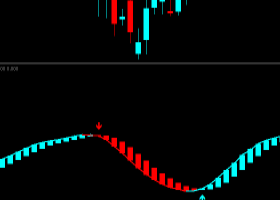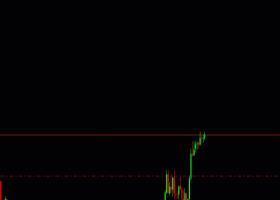Like Canada, Australia's economy is a service based economy, with over 68% of GDP coming from the service sector. Although agriculture and mining account for only 4.7% of Australian GDP, they account for over 65% of the country's exports. This makes the currency highly sensitive to increases or decreases in the price of commodities, especially gold, as Australia is the world's 3rd largest exporter of gold.
While the country and currency are similar to Canada in many ways, a primary difference is the trade relationships that Australia has developed with Asia, and in particular Japan and China, which represent its two largest export markets. This gives the currency a unique exposure to Asia, which generally does not exist with the other non Asian currencies we have studied up to this point.
As Kathy Lien points out in her book Day Trading the Currency Market, the Australian economy was able to whether the Asian financial crisis relatively well, so while there is exposure there, it is also important to keep a watch on the country's historically strong domestic consumption, in times of global economic slowdowns.
The last major factor to keep in mind about the Australian Dollar, is that Australia has one of the highest interest rates in the developed world, currently at 7.25% as of this lesson. This has made the currency one of the primary beneficiaries of carry trade flows, which we learned about in my 3 part series on the carry trade, in module 3 of this course. These flows, combined with the facts that many commodities that Australia exports are at all time highs, and the Australian economy has remained relatively strong through the current crisis, has moved the AUD/USD to 25 year highs as of this lesson.
AUD/USD Monthly:
While the country and currency are similar to Canada in many ways, a primary difference is the trade relationships that Australia has developed with Asia, and in particular Japan and China, which represent its two largest export markets. This gives the currency a unique exposure to Asia, which generally does not exist with the other non Asian currencies we have studied up to this point.
As Kathy Lien points out in her book Day Trading the Currency Market, the Australian economy was able to whether the Asian financial crisis relatively well, so while there is exposure there, it is also important to keep a watch on the country's historically strong domestic consumption, in times of global economic slowdowns.
The last major factor to keep in mind about the Australian Dollar, is that Australia has one of the highest interest rates in the developed world, currently at 7.25% as of this lesson. This has made the currency one of the primary beneficiaries of carry trade flows, which we learned about in my 3 part series on the carry trade, in module 3 of this course. These flows, combined with the facts that many commodities that Australia exports are at all time highs, and the Australian economy has remained relatively strong through the current crisis, has moved the AUD/USD to 25 year highs as of this lesson.
AUD/USD Monthly:




